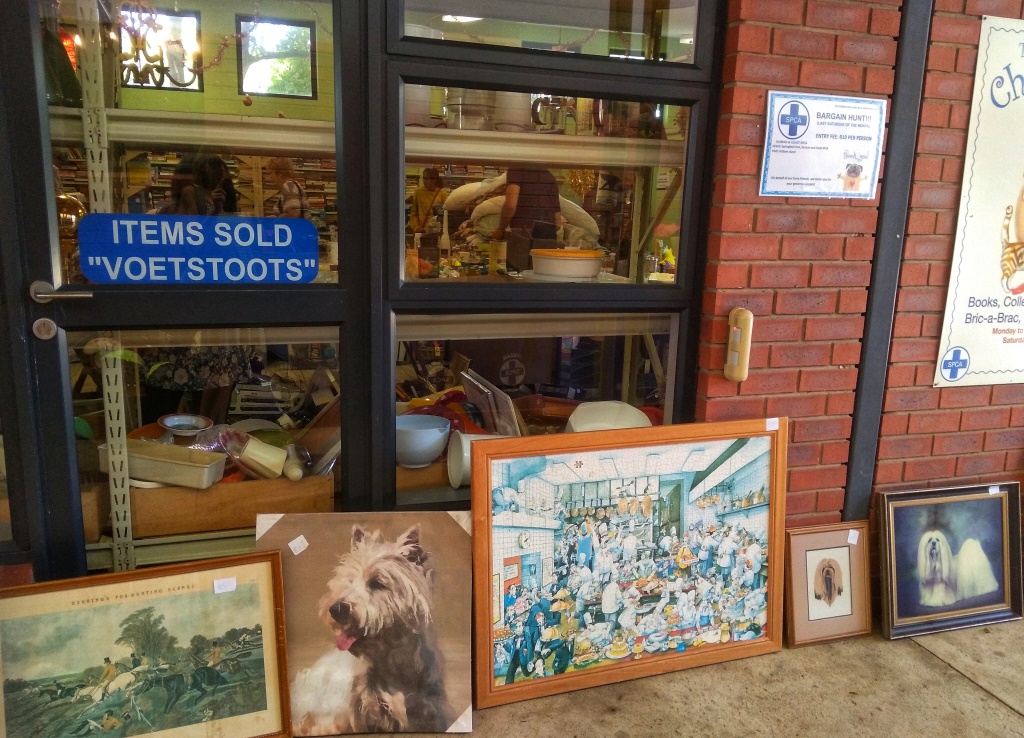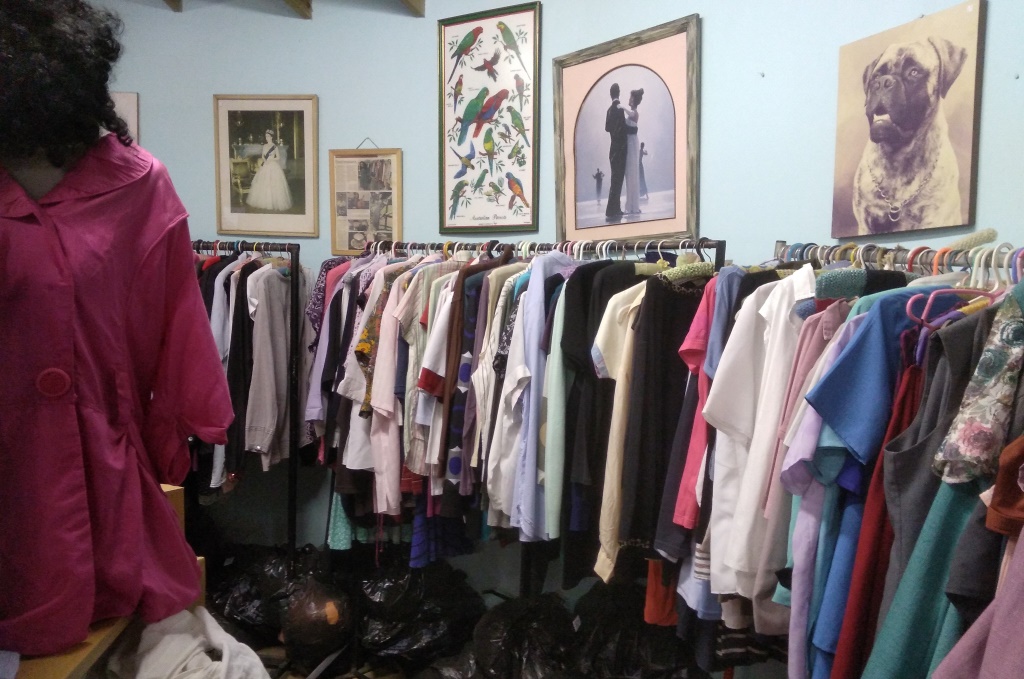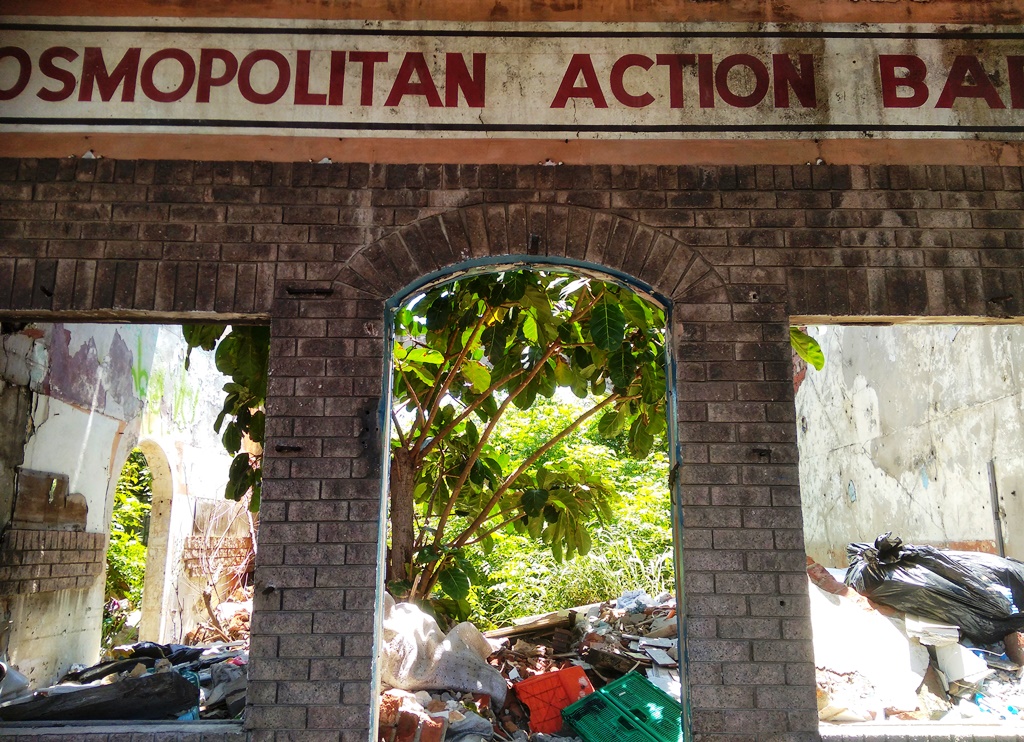A Durban thrift adventure
Durban was always going to be my big challenge a mere four-something months into my year of not buying new clothes.

A visit to my old hometown has always included wandering through clothing shops, picking up an item or two. I’ve justified it as one of my pleasures, but in reality, it’s been about wasting time and money. Yes, I was slightly apprehensive about spending a fortnight in Durban and not buying new clothes.
Teeny tug
At the mall, I feel a teeny tug – just a teeny one – when I walk past The Space. In a sports clothing shop (#him is looking for Park Run shoes; his are disintegrating), I actually catch my breath as I caress leggings in graphic black and white.
And then I walk on. Touching and feeling does not mean I have to buy. I save my rands for a thrift, vintage and charity mini exploration.

Haven
We start at The Charity Shop at the SPCA in Springfield Park, a haven tucked behind factories. There are not many clothes here (at this time), but there are plenty of other things. There is crockery of all kind (you could easily kit out a kitchen here), games and puzzles (Christmas presents!), a mannequin I’d love to be able to fit into my car to take home – and books. #him and I walk out with an armful of books.

Treasure chest
The shop at the Highway Hospice in Queensburgh/Pinetown is a true treasure chest. I scoop up a long, striped summer dress (R20) that touches the floor and a halter-neck top (R25) that my daughter will love. We find more books. And more books.
At the till, the man in front of me asks the volunteer cashier: “Can I get a discount?” She cringes, but calmly explains: “The money we raise helps care for people at the end of their lives. No, you can’t have a discount.”
Then the klutz opens his mouth to change feet. He whispers loudly to me: “It’s an Indian thing.” It happens, the cashier tells me, but most customers would not dream of doing this.

Cool oasis
Two shops and we are pooped. The next day, we head up Fields Hill to the SPCA in Kloof. And we find an oasis in the coolness – it’s at least 6C cooler than the steaming city at the bottom of the hill. We follow a narrow road that winds through a lush forest and over a stream to the Village Market.
Here, there is not just one charity shop; there are several and they are arranged around a central square and a coffee shop on the lawn, with live music on the day we are there. You could spend hours here, I think. And we do.
I stroke a gorgeous Whistles jacket (R60), but I don’t buy it: I don’t get to wear the jackets I already own in this warm part of the world. Instead, I buy a Poetry blouse that will look great on my sister (R30), a soft wrap to wear over my bathing costume (R25) and Lizzie board shorts (R15). And we gather books. And more books.

To the point
Another day, another adventure. I meet my friend, Joanne, down Mahatma Gandhi Road (once called Point Road) at the Durban Vintage Market, a pop-up shop stocked with clothing, crockery and household items. Joanne and I have history: we once worked together as journalists in Durban and we sometimes let off steam after work in areas such this, aka “the red-light district”. She shrieks with laughter as she recalls her brief stint in PR here – “I worked on these streets”. And she shrieks some more when I remind her of the time a drunk sailor tried to buy me in the old Vic bar across the road (and I still swear my colleagues considered selling me).
Anyway, back to the point. She is also a member of We’re not buying new clothes for a year. Spurred on by Joanne, I try on a pile of dresses and then place them back on the rack. She hauls a swirly green dress (R50) from the bargain bin. I try it on, pay for it (as well as an art deco mirror for R60) and leave it on for the rest of the day. Joanne finds a black, gathered, cotton tunic (R100).

Catching on
We walk past the remnants of once-splendid buildings to the I Heart Market, which has moved from the Moses Mabhida Stadium to The Hay Store near the harbour. Vintage and thrift are catching on – there are several such stalls. I assume that second-hand items will be expensive at this trendy market. Indeed, some stalls do price their items higher, but still less than new items; plus, they are good quality and tastefully selected.
But not all are expensive. I buy a pair of high-waisted striped shorts (R50), which I would not even have tried on if it was not for Joanne, from a stall called the thrift collection. They look cool and feel great; I picture wearing them with my grey vest. Joanne finds a floaty, blue strapless dress (R180).
We browse through the stalls selling new clothes and we agree that when we buy new clothes again, we will look at items such as these – small businesses, good quality, locally designed and made.
Saving money – and the Earth
So, let’s see. Apart from two gifts and a gorgeous mirror, I have spent a total of R160 on two pairs of shorts, a wrap and two dresses – all of which I know I’ll wear many times. Those leggings I caressed would have cost me more than four times as much. I’m not advocating quantity over quality, but saving money is more than welcome.
More important, I’ve been kind to the Earth, reducing my carbon footprint by choosing second-hand. I won’t repeat the facts; you can find them here.
I still love clothes. But my no-new-clothes journey is teaching me to be more thoughtful before I buy. Even though I was buying second-hand clothes, I still found myself asking questions. Do I need it? Will I wear it? Will I wear it often? What will I wear it with? Where did it come from? Plus, I know when to stop. There are more charity shops to see, I know … another time.



1 thought on “A Durban thrift adventure”